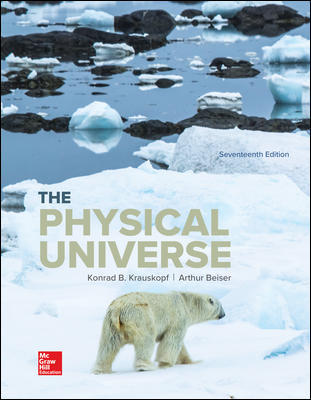Description
The Physical Universe 17Th edition By Konrad Krauskopf – Test Bank
Chapter 06 Test Bank KEY
1. Electric charge
A. can be subdivided indefinitely.
B. occurs only in separate parcels of ±1.6 × 10-19 C.
- occurs only in separate parcels of ±1 C.
- occurs only in separate parcels whose value depends on the particle carrying the charge.
Accessibility: Keyboard Navigation
Blooms: 1. Remember
Figure: 06.06
Gradable: automatic
Section: 06.02
Topic: Atomic Physics
- A negative electric charge
- interacts only with positive charges.
- interacts only with negative charges.
C. interacts with both positive and negative charges.
D. may interact with either positive or negative charges, depending on circumstances.
Accessibility: Keyboard Navigation
Blooms: 1. Remember
Figure: 06.01
Gradable: automatic
Section: 06.01
Topic: Electric Forces
- Coulomb’s formula F = KQ1Q2/R2 gives the force between two charges in free space. The value of K
A. is the same under all circumstances.
- is different for positive and negative charges.
- depends on the masses of the charged particles.
- equals the charge on the electron.
Accessibility: Keyboard Navigation
Blooms: 1. Remember
Gradable: automatic
Section: 06.03
Topic: Electric Forces
- Which of the following statements is not true?
- The positive charge in an atomic nucleus is due to the protons it contains.
- All protons have the same charge.
- Protons and electrons have charges equal in magnitude although opposite in sign.
- Protons and electrons have equal masses.
Accessibility: Keyboard Navigation
Blooms: 1. Remember
Gradable: automatic
Section: 06.02
Topic: Atomic Physics
5.Relative to the electric force between two protons, the gravitational force between them is
A. weaker.
- equal in magnitude.
- stronger.
- Any of these choices could be correct, depending on how far apart the protons are.
Accessibility: Keyboard Navigation
Blooms: 1. Remember
Gradable: automatic
Section: 06.05
Topic: Electric Forces
- The electrons in an atom
A. are bound to it permanently.
B. are some distance away from the nucleus.
- have more mass than the nucleus.
- may be positively or negatively charged.
Accessibility: Keyboard Navigation
Blooms: 1. Remember
Figure: 06.05
Gradable: automatic
Section: 06.02
Topic: Atomic Physics
- Atoms and molecules are normally
A. electrically neutral.
- negatively charged.
- positively charged.
- ionized.
Accessibility: Keyboard Navigation
Blooms: 1. Remember
Gradable: automatic
Section: 06.02
Topic: Atomic Physics
- The nucleus of an atom
A. contains most of the atom’s mass.
- is nearly as large as the atom.
- is electrically neutral.
- may contain protons, neutrons, and electrons.
Accessibility: Keyboard Navigation
Blooms: 1. Remember
Gradable: automatic
Section: 06.02
Topic: Atomic Physics
- An object has a positive electric charge whenever
A. it has an excess of electrons.
B. it has a deficiency of electrons.
- the nuclei of its atoms are positively charged.
- the electrons of its atoms are positively charged.
Accessibility: Keyboard Navigation
Blooms: 1. Remember
Blooms: 2. Understand
Gradable: automatic
Section: 06.01
Section: 06.02
Topic: Atomic Physics
10. Which of the following statements is not true?
- Protons are positively charged.
- The proton mass is greater than the electron mass.
- The proton mass is almost the same as the neutron mass.
- A proton in an atom circulates around its nucleus.
11. A molecule that has lost an electron becomes a
A. positive ion.
- negative ion.
- nucleus.
- superconductor.
12. Which of the following statements is correct?
- Electrons carry electric currents.
- The motion of electrons produces electric currents.
- Moving electrons constitute electric currents.
- Electric currents are carried by conductors and insulators only.

Reviews
There are no reviews yet.